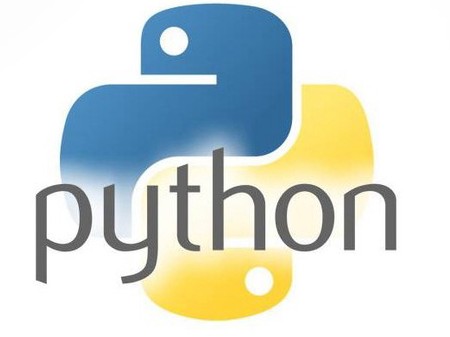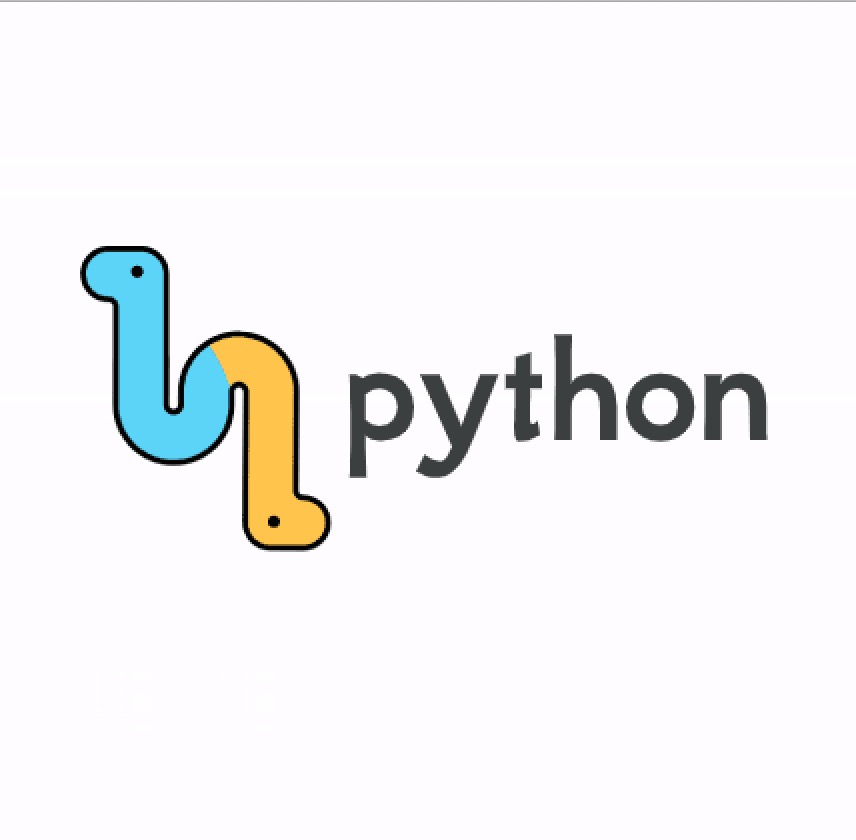CSSE1001代写 Python assignment代写
Introduction
Pipe
Assignment 2 - V1.2 (14/04/20) CSSE1001/7030 Semester 1, 2020
Due, 1st May 15 marks
The model-view-controller (MVC) structure is a popular way to organize code for software projects that involve a Graphical User Interface (GUI). In this structure, the software is broken into three components - the model, the view and the controller. The goal of this assignment is to implement the model component of the softwareforthegameP ipe.Thecodefortheviewandcontrolleraresuppliedinsupportcode.
Gameplay
Pipe is a single-player puzzle game where players place various pipe pieces in grid cells. The objective is for the player to connect the start pipe to the end pipe. The game play utilises simple mouse control.
Selecting and placing pipes
A left click on a pipe in the selection panel should toggle the selection of that pipe piece. A left click in the game board should then place a pipe of the selected type over the selected tile provided that an available pipe piece (i.e. quantity > 0) is selected in the selection panel.
Rotating and removing pipes
A left click on a pipe in the game board should rotate the given pipe, and a right click on a pipe in the game board should remove that pipe and return it to the selection board, provided the pipe was placed by the user. If a pipe is loaded in from the beginning of the game, it will not be able to be rotated or removed.
“Restart” and “New Game” buttons
The Restart button will restart the game. The New Game button will prompt for the player to enter the name of the file they wish to load into the game. The name of the file will be automatically passed through to PipeGame. This much functionality is implemented already in the support code. However, the New Game button will only become functional (actually present the user with the game from the requested file) if you successfully implement the Bonus Task load_file function described at the end of this assignment sheet.
Game over
The player wins the game by connecting the pipes from start to finish, see Figure 1. On game completion, the player is informed of their outcome via a messagebox.
Figure 1. A completed game (pipes all connected)
Getting Started
Files
a2.py - file where you write your submission
gui.py - contains the view and part of the controller game_n.csv - the game board
images/ - a directory of images
To start, download a2_files.zip from Blackboard and extract the contents. This folder contains all the necessary files to start this assignment. You will be required to implement your assignment in a2.py. Do not modify any files from a2.zip except a2.py. The only file that you are required to submitisa2.py. Somesupportcodehasbeenprovidedtoassistwithimplementingthetasks.
Classes
Many modern software programs are implemented with classes and this assignment will give you some practice in working with them. The class structure that you will be working with is shown diagrammatically in Figure 2. The red blocks represent classes that have already been written for you.
In Figure 2 an arrow with a solid head indicates that one class stores an instance of another class. (This is analogous, say, to a list storing instances of strings within it). An arrow with an open head indicates that one class is a subclass of another class.
You are encouraged to modify the class structure by adding classes to reduce code duplication. This can include adding your own private helper methods.
Figure 2. Class structure for the software program
Tiles and Pipes
Tile
A tile represents an available space in the game board. Each tile has a name, and can be unlocked/selectable (available to have pipes placed on them) or locked/unselectable (cannot have pipes placed on them). By default, tiles should be selectable. Tiles should be constructed with Tile(name, selectable=True). Tiles should have the following methods defined:
get_name(self) -> str: Returns the name of the tile.
get_id(self) -> str: Returns the id of the tile class.
set_select(self, select: bool): Sets the status of the select switch to True or False.
can_select(self) -> bool: Returns True if the tile is selectable, or False if the tile is not selectable.
__str__(self) -> str: Returns the string representation of the Tile. See example output below.
__repr__(self) -> str: Same as str(self).
See example outputs below.
Note that the type hints (eg. select: bool) shown in the methods above are purely for your own understanding. Type hints do not need to be used in your assignment.
Examples
-
>>> tile = Tile('#')
-
>>> tile.get_name() '#'
-
>>> tile.get_id() 'tile'
>>> tile.can_select() True
>>> str(tile) "Tile('#', True)">>> repr(tile)
"Tile('#', True)"
>>> locked = Tile('locked', False)
>>> locked.get_name() 'locked'
>>> locked.get_id() 'tile'
>>> locked.can_select() False
>>> str(locked) "Tile('locked', False)"
Pipe
A pipe represents a pipe in the game. Pipes are a special type of Tile, which can be connected to other pipes in the game board to form a path. Pipes should be selectable unless they are loaded in as part of the game board, e.g. from a file or as part of the initial hard coded game. Each pipe has a name, which defines its pipe type (see Appendix B for a list of pipe names and their corresponding types), and an orientation. A player can rotate a pipe that they placed b y left-clicking on that pipe in the game board. If the pipe was already on the board when the game was set up or loaded, the pipe cannot be rotated. Each pipe has 4 orientations; 0, 1, 2 and 3:
0 Standard orientation
1 Rotated clockwise once from standard orientation 2 Rotated clockwise twice from standard orientation 3 Rotated clockwise thrice from standard orientation
Rotating a pipe that has the orientation of 3 will reset it back to the standard orientation of 0. Furthermore, each pipe type has a unique connection profile. For example:
-
1) A straight pipe with the orientation of 0 should have a connection between the North and the South sides.
-
2) An over-under pipe with the orientation of 0 should have a connection between the North and South sides, and an additional connection between the East and West sides.
When a pipe is rotated, the connection profile must be updated accordingly. The representation of the connection profile is at your discretion. Pipes should be constructed with Pipe(name, orientation=0, selectable=True). All pipes must have the following methods defined:
get_connected(self, side: str) -> list
rotate(self, direction: int): Rotates the pipe one turn. A positive direction implies clockwise rotation, and a negative direction implies counter-clockwise rotation and 0 means no rotation.
get_orientation(self) -> int: Returns the orientation of the pipe (orientation must be in the range [0, 3]).
__str__(self) -> str: Returns the string representation of the Pipe. See example output below.
__repr__(self) -> str: Same as str(self). Examples
>>> pipe = Pipe('straight') >>> pipe.get_name() 'straight'
>>> pipe.get_id()
'pipe'
>>> str(pipe)
"Pipe('straight', 0)"
>>> repr(pipe)
"Pipe('straight', 0)"
>>> pipe.get_connected('N')
['S']
>>> pipe.get_connected('E')
[]
>>> pipe.get_connected('S')
['N']
>>> pipe.rotate(1)
>>> pipe.get_connected('E')
['W']
>>> pipe.get_orientation()
1
>>> pipe.rotate(1)
>>> pipe.rotate(1)
>>> pipe.rotate(1)
>>> pipe.get_orientation()
0
>>> new_pipe = Pipe("straight", 1) >>> new_pipe.get_connected("E") ['W']
>>> new_pipe.get_id()
'pipe'
SpecialPipe
SpecialPipe is an abstract class used to represent the start and end pipes in the game (see Appendix A). Neither the start nor end pipe should be selectable, and the orientations should be fixed. The id should be set to “special_pipe”.
__str__(self) -> str: Returns the string representation of the Special Pipes. See example output below.
__repr__(self) -> str: Same as str(self). StartPipe
A StartPipe represents the start pipe in the game. In addition to the special pipe restrictions listed above, the start pipe should implement its get_connected method slightly differently to a regular pipe:
get_connected(self, side=None) -> list
Examples
>>> start = StartPipe() >>> str(start) "StartPipe(0)"
>>> start.get_id() 'special_pipe'
>>> repr(start) "StartPipe(0)"
>>> start.get_orientation()
0
>>> start.get_connected() ['N']
>>> new_start = StartPipe(1) >>> new_start.get_connected() ['E']
EndPipe
An EndPipe represents the end pipe in the game. In addition to the special pipe restrictions listed above, the end pipe should implement its get_connected method slightly differently to a regular pipe:
get_connected(self, side=None) -> list
Examples
>>> end = EndPipe() >>> str(end) "EndPipe(0)"
>>> repr(end) "EndPipe(0)"
>>> end.get_id() 'special_pipe'
>>> end.get_connected() ['S']
>>> new_end = EndPipe(1) >>> new_end.get_connected() ['W']
PipeGame
PipeGame represents the overall information associated with a game of Pipe. You will need to implement the following methods in the PipeGame class. This will also require you to add to existing methods in the class.
get_board_layout(self) -> (list
get_playable_pipes(self) ->(dict
change_playable_amount(self, pipe_name: str, number: int): Add the quantity of playable pipes of type specified by pipe_name to number (in the selection panel).
set_pipe(self, pipe: Pipe, position: tuple
get_pipe(self, position) -> (Pipe|Tile): Returns the Pipe at the position or the
tile if there is no pipe at that position.
pipe_in_position(self, position) -> Pipe: Returns the pipe in the given position (row, col) of the game board if there is a Pipe in the given position. Returns None if the position given is None or if the object in the given position is not a Pipe.
remove_pipe(self, position: tuple
position_in_direction(self, direction, position) -> tuple
end_pipe_positions(self): Find and save the start and end pipe positions from the game board. This should be called in the __init__() method so the start and end pipe positions could be found when the PipeGame class is first constructed.
get_starting_position(self) -> (tuple
get_ending_position(self) -> (tuple
Examples:
>>> game = PipeGame()
>>> game.get_board_layout()
[[Tile('tile', True), Tile('tile', True), Tile('tile', True), Tile('tile', True), Tile('tile', True), Tile('tile', True)], [StartPipe(1), Tile('tile', True), Tile('tile', True), Tile('tile', True), Tile('tile', True), Tile('tile', True)], [Tile('tile', True), Tile('tile', True), Tile('tile', True), Pipe('junction-t', 0), Tile('tile', True), Tile('tile', True)], [Tile('tile', True), Tile('tile', True), Tile('tile', True), Tile('tile', True), Tile('locked', False), Tile('tile', True)], [Tile('tile', True), Tile('tile', True), Tile('tile', True), Tile('tile', True), EndPipe(3), Tile('tile', True)], [Tile('tile', True), Tile('tile', True), Tile('tile', True), Tile('tile', True), Tile('tile', True), Tile('tile', True)]]
>>> game.get_playable_pipes()
{'straight': 1, 'corner': 1, 'cross': 1, 'junction-t': 1, 'diagonals': 1, 'over-under': 1}
>>> game.change_playable_amount('straight', 2)
>>> game.get_playable_pipes()
{'straight': 3, 'corner': 1, 'cross': 1, 'junction-t': 1, 'diagonals': 1, 'over-under': 1}
>>> game.change_playable_amount('straight', -1)
>>> game.get_playable_pipes()
{'straight': 2, 'corner': 1, 'cross': 1, 'junction-t': 1, 'diagonals': 1, 'over-under': 1}
>>> straight = Pipe('straight')
>>> game.set_pipe(straight,(0,0))
>>> game.get_playable_pipes()
{'straight': 1, 'corner': 1, 'cross': 1, 'junction-t': 1, 'diagonals': 1, 'over-under': 1}
>>> game.get_board_layout()
[[Pipe('straight', 0), Tile('tile', True), Tile('tile', True), Tile('tile', True), Tile('tile', True), Tile('tile', True)], [StartPipe(1), Tile('tile', True), Tile('tile', True), Tile('tile', True), Tile('tile', True), Tile('tile', True)], [Tile('tile', True), Tile('tile', True), Tile('tile', True), Pipe('junction-t', 0), Tile('tile', True), Tile('tile', True)], [Tile('tile', True), Tile('tile', True), Tile('tile', True), Tile('tile', True), Tile('locked', False), Tile('tile', True)], [Tile('tile', True), Tile('tile', True), Tile('tile', True), Tile('tile', True), EndPipe(3), Tile('tile', True)], [Tile('tile', True), Tile('tile', True), Tile('tile', True), Tile('tile', True), Tile('tile', True), Tile('tile', True)]]
>>> game.remove_pipe((0,0))
>>> game.get_board_layout()
[[Tile('tile', True), Tile('tile', True), Tile('tile', True), Tile('tile', True), Tile('tile', True), Tile('tile', True)], [StartPipe(1), Tile('tile', True), Tile('tile', True), Tile('tile', True), Tile('tile', True), Tile('tile', True)], [Tile('tile', True), Tile('tile', True), Tile('tile', True), Pipe('junction-t', 0), Tile('tile', True), Tile('tile', True)], [Tile('tile', True), Tile('tile', True), Tile('tile', True), Tile('tile', True), Tile('locked', False), Tile('tile', True)], [Tile('tile', True), Tile('tile', True), Tile('tile', True), Tile('tile', True), EndPipe(3), Tile('tile', True)], [Tile('tile', True), Tile('tile', True), Tile('tile', True), Tile('tile', True), Tile('tile', True), Tile('tile', True)]]
>>> game.get_playable_pipes()
{'straight': 2, 'corner': 1, 'cross': 1, 'junction-t': 1, 'diagonals': 1, 'over-under': 1}
>>> game.position_in_direction('E',(0,0))
('W', (0, 1))
>>> game.position_in_direction('E',(0,1))
('W', (0, 2))
>>> game.position_in_direction('N',(0,0))
>>> print(game.position_in_direction('N',(0,0)))
None
>>> game.pipe_in_position((0,0))
>>> print(game.pipe_in_position((0,0)))
None
>>> game.set_pipe(straight,(0,0))
>>> game.pipe_in_position((0,0))
Pipe('straight', 0)
>>> game.set_pipe(straight,(0,1))
>>> game.get_playable_pipes()
{'straight': 0, 'corner': 1, 'cross': 1, 'junction-t': 1, 'diagonals': 1, 'over-under': 1}
>>> game.get_board_layout()
[[Pipe('straight', 0), Pipe('straight', 0), Tile('tile', True), Tile('tile', True), Tile('tile', True), Tile('tile', True)], [StartPipe(1), Tile('tile', True), Tile('tile', True), Tile('tile', True), Tile('tile', True), Tile('tile', True)], [Tile('tile', True), Tile('tile', True), Tile('tile', True), Pipe('junction-t', 0), Tile('tile', True), Tile('tile', True)], [Tile('tile', True), Tile('tile', True), Tile('tile', True), Tile('tile', True), Tile('locked', False), Tile('tile', True)], [Tile('tile', True), Tile('tile', True), Tile('tile', True), Tile('tile', True), EndPipe(3), Tile('tile', True)], [Tile('tile', True), Tile('tile', True), Tile('tile', True), Tile('tile', True), Tile('tile', True), Tile('tile', True)]]
>>> game.get_starting_position()
(1, 0)
>>> game.get_ending_position()
(4, 4)
load_file(self, filename) - (Bonus task)
This task is worth bonus marks; it will enable you to get a maximum of 2 additional marks, which
will be added to your score out of 15. Your score, however, will be capped at 15 out of 15.
Currently, the initial game setup (e.g. board_layout and playable_pipes) is hardcoded at the beginning of the constructor for Game. Implement the following function to allow board_layout
and playable_pipes to be set according to a .csv file (you can assume the file and its formatting is valid), and integrate this functionality as a method in the PipeGame class:
load_file(self, filename: str) -> tuple
Game file protocol
The game file should be in a .csv (comma-separated values) format. The file should contain the representation of the game grid (which must be a square), followed by the number of playable pipes available for the given game. Please refer to SPECIAL_TILES and PIPES for the naming convention of all the different pipes.
Example 1
#,#,#
S,#,#
#,#,E
1,2,3,4,5,6
Example 1 should place:
-
- Starting pipe in position (1, 0);
-
- Ending pipe in position (2, 2); and
The player should have access to 1 straight, 2 corner, 3 cross, 4 junction-t, 5 diagonals and 6 over-under playable pipes.Example 2
#,#,#,#
S,#,L,#
#,#,ST1,#
#,#,#,E3
1,1,1,1,1,1
Example 1 should place:
-
- Starting pipe in position (1, 0);
-
- Ending pipe in position (3, 3) with orientation of 3;
-
- Locked tile in position (1, 2); and
-
- Straight pipe in position (2, 2) with orientation of 1.
The player should have access to 1 of each playable pipe.
Marking
&nb






